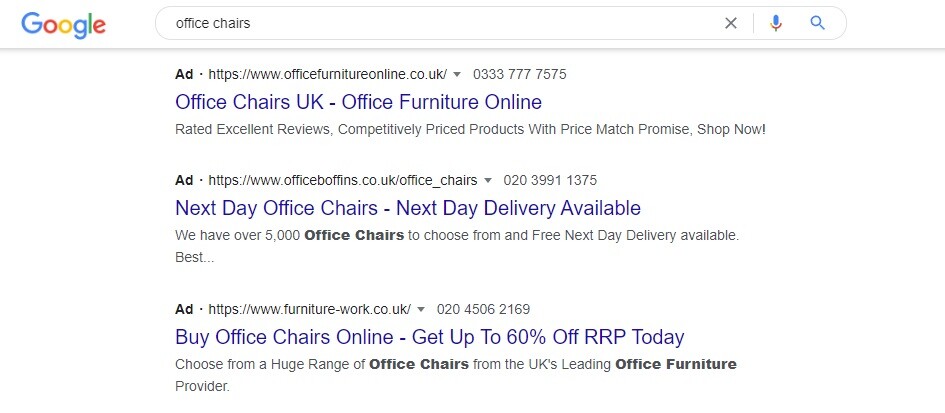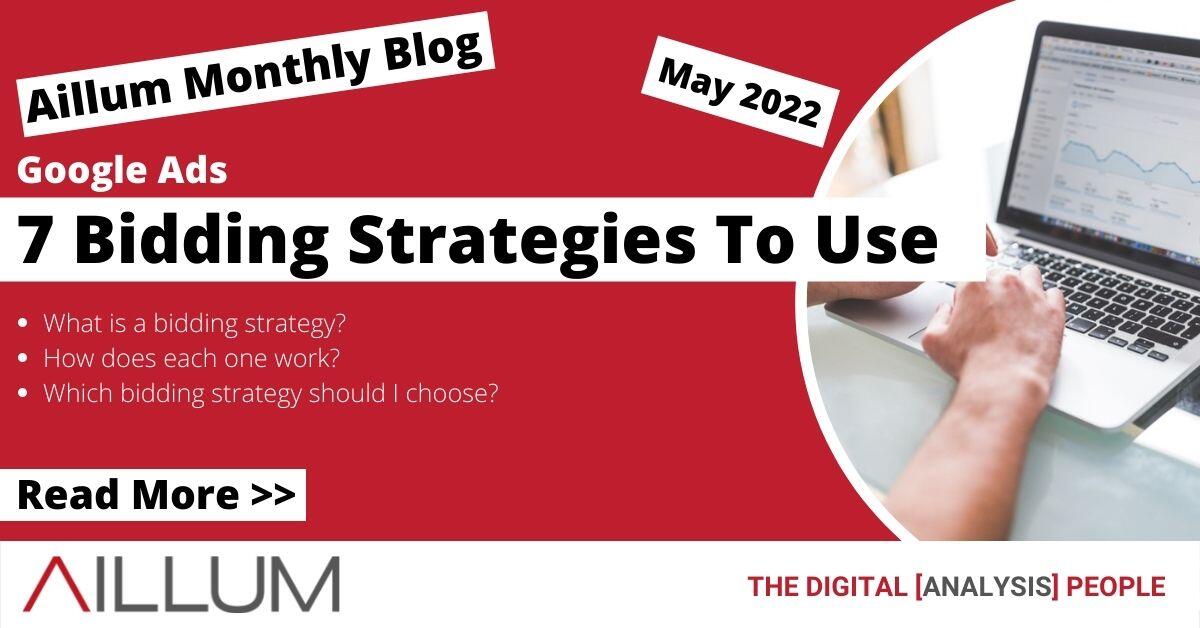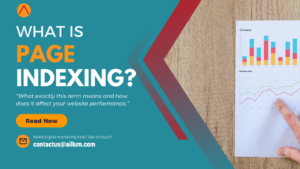When using Google Ads or other paid advertising such as Microsoft Ads there are a variety of bidding strategies to choose from. Find out which you should use to get the most out of your digital marketing campaigns.
What is a bidding strategy?
Every paid search campaign requires a bidding strategy to be selected in order to make bids to display your ads. When a user performs a relevant search on a platform, for example using Google’s search engine, your paid ads will attempt to “bid” to display the ad to the user. There are a variety of factors that determine whether or not your ad will be displayed. Quite often it won’t be displayed all of the time, as to keep the bidding fair and budgets spread out throughout the day.
Don’t be surprised if you search for your own ads and they don’t appear in Google right away, your ads will still be shown as long as your campaigns are set up correctly.
Bidding strategies are different types of bidding methods that are used along with other data in your Google Ads account to help fulfil particular goals. Most of them are automated and will adjust the actual bid value at the moment a user searches. This is known as “auction-time bidding”. Depending on what purpose you have for your marketing campaign, different bidding strategies can produce wildly different levels of performance. Here are 6 bidding strategies for you to use in Google Ads.
1. Maximise Clicks
This particular strategy will aim to get your campaign as many clicks as possible by adjusting your bidding automatically while staying within your daily budget. This strategy is particularly useful to push higher volumes of traffic to your website. Having a dedicated, purposeful landing page is especially important for this bidding strategy. You won’t want your visitors to immediately bounce and leave your website if you’re attempting to maximise traffic.
2. Target Impression Share
When your paid ads are displayed online, they’ll appear alongside ads from other businesses. Each time an ad is visible and seen, it counts as an impression and your paid ads will have a share of the overall total impressions, based on your bidding and budget. Target impression share will automatically adjust your bidding to try and display your ad as often as possible. However, just being displayed is sometimes not enough, so target impression share bidding can also aim to show your ads in better positions too.

You can aim for one of the top 3 spots in Google search results, or as the very first ad to be shown (known as the absolute top) which can have a big impact on your business’s visibility. This bidding strategy excels at brand awareness and can help with exposure to get your brand into new markets.
3. Maximise Conversions
For your paid ads, if you have goals and conversions already set up within Google Ads or your Google Analytics account, then you may want to consider this bidding strategy. Rather than showing your paid ads as often as possible, this automated bidding strategy will attempt to use your existing conversion data to maximise the number of conversions your campaign will bring in.
Without any additional settings, Maximise Conversions will attempt to spend your entire daily budget for as many conversions as possible.
Maximise Conversions is the most basic of the conversion based bidding strategies in Google Ads. There are advanced options available by adding additional settings to your bidding strategy. However it should be noted that you will need to have a minimum number of conversions over a time period in order to use any of the conversion bidding strategies.
4. Maximise Conversion Value
An advanced option within Maximise Conversions, it is possible to use the bidding strategy to push for better valued conversions. To make use of this feature you will need to apply a value to your different conversions and goals. Google Ads can then use this information and rather than bid indiscriminately for as many conversions as possible, adjust the bids to push for conversions that are worth more to your business. It will however aim to spend as much as your budget as possible, so keep this in mind and manage your budget limits accordingly.
Free Digital Tips Direct to your Inbox!
Be among the first to receive tips, advice and news on all things digital performance related. From new features in Google Analytics, Data Studio and other tools, to interesting articles, videos and more! Completely Free! (Unsubscribe any time you like!)
5. Target CPA
Another advanced option within Maximise Conversions is to set a Target Cost Per Acquisition (CPA). This is a value you can add to the automated bidding strategy, instructing Google to aim to spend a set amount of money per conversion.

This is a fantastic strategy for controlling your budget and assigning a definitive value to each conversion. Target CPA represents what you are willing to pay for each conversion, so rather than assign an end-value to each conversion, you can specify what you’re willing to spend on each one. To use this strategy effectively you should keep your expectations and estimations realistic. Setting your Target CPA to 1p per click is likely going to hinder your campaign’s traffic significantly!
6. Target ROAS
A third advanced option for a conversion-based bidding strategy, Target Return On Ad Spend (ROAS) is designed to balance conversion volume and value. You can decide on a “return” for how much you spend on ads. This bidding strategy is very similar to Maximise Conversion Value, though instead of trying to spend as much budget as possible, your campaign will instead aim for a specified return on investment, dictated by the value of your conversions and what you spend. This return is considered a percentage.
For example, if a lead is worth £12 to you (this is your conversion value) and you’d be happy to pay £4 for such a lead, then you could set your Target ROAS to 300%. This would tell Google Ads that for every £4 you spend on ads, you want a return of 300%, which in this case would be £12, the same as your conversion value.
This is one of the trickier automated bidding strategies to set up and may require some fine tuning, but can provide you with very efficient results depending on your conversion value.
7. Manual CPC (& Enhanced)
The last bidding strategy available is not considered smart bidding and is not automated at all. Manual CPC is where you set a specific maximum cost per click (CPC) and Google will bid to display your paid ads up to that value. This can still be higher or lower from other factors, such as bid adjustments, but all of your bids will be set manually by yourself.
If you’re wondering why this would ever be useful compared to automated bidding, Manual CPC bidding gives you the maximum level of control over your bids. This can be used for fine tuning your campaigns, ad groups and even keywords. All of the automated bidding strategies are set at the campaign level, so the option to adjust ad groups and keywords individually is otherwise lost.

There is also an option to enable “Enhanced” Manual CPC bidding. This is mostly the same as regular Manual CPC bidding but introduces a small automated element, to slightly increase your bids if Google Ads thinks a conversion could be obtained by bidding just a little bit higher.
How do I choose the right bidding strategy?
When deciding on the bidding strategy for your campaign, always consider what the goal of the campaign actually is. Despite all of the various bidding strategies, algorithms and data, the value of your campaign to your business is up to you. To summarise the above (or if you skipped ahead) here are some examples of which bidding strategies to choose, based on your goal:
- Brand awareness: Target Impression Share to get your ads seen as much as possible.
- Traffic to your website: Maximise Clicks to get as many visitors from Google search to your website through your ads.
- As many conversions as possible: Maximise Conversions to bid for as many conversions as possible within budget, no matter the quality.
- As many (better) conversions as possible: Maximise Conversion Value. Spend your budget for as many conversions as possible within budget, but spend a little more for higher-valued conversions.
- Willing to spend X per conversion: Target CPA to bid a desired amount per conversion.
- Willing to spend X to get Y back in conversions: Target ROAS to bid on conversions that are valuable enough for what you’re willing to spend.
- Full control and testing: Manual CPC to keep your bids firmly in your control and test bidding changes at any level within your campaigns.
Hopefully you’ll now have an understanding of what bidding strategies to use in Google Ads and what kind of scenario each of them can be effective for. Keep in mind your budgets and bid limits and test for yourself!
If you need some help managing your bidding strategies and everything else within Google Ads, get in touch with us today.





